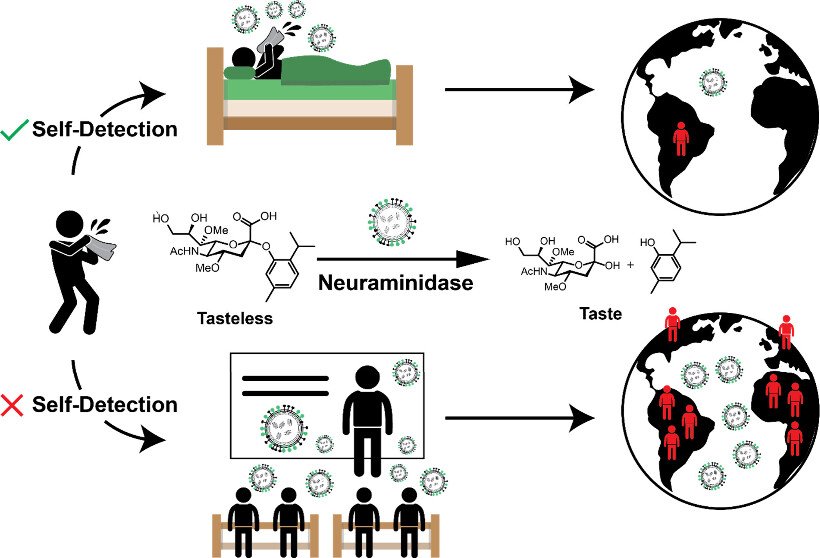Imagine diagnosing the flu with a simple tongue test. Researchers have developed a prototype sensor that could one day make this possible by detecting viral proteins directly from saliva. The device uses a small, flexible strip coated with antibodies that bind to influenza A proteins. When the strip is placed on the tongue, it captures viral markers and produces a measurable electrical signal, indicating the presence of infection.
The sensor is based on electrochemical detection, a technique that converts biological interactions into readable data. In lab tests, the device successfully identified influenza A proteins in saliva samples within minutes. Its design is compact and noninvasive, making it suitable for point-of-care use in clinics, pharmacies, or even at home.
One of the key advantages of this approach is its speed and simplicity. Traditional flu tests often require nasal swabs and lab processing, which can delay diagnosis and treatment. A tongue-based sensor could offer immediate results, helping patients begin antiviral therapy sooner and reducing the spread of infection.
The research team also explored ways to improve the sensor’s sensitivity and stability. They used a conductive polymer to enhance signal strength and tested different antibody coatings to ensure reliable detection. The device performed well across a range of saliva concentrations, suggesting it could work in real-world conditions.
While still in early development, the technology shows promise for expanding rapid diagnostics beyond influenza. Future versions could be adapted to detect other respiratory viruses, such as RSV or COVID-19, using similar principles. The researchers envision a future where wearable or disposable biosensors provide quick health insights without the need for complex equipment.
Article from the American Chemical Society: A step toward diagnosing the flu with your tongue
Abstract in ACS Central Science: A Viral Neuraminidase-Specific Sensor for Taste-Based Detection of Influenza

